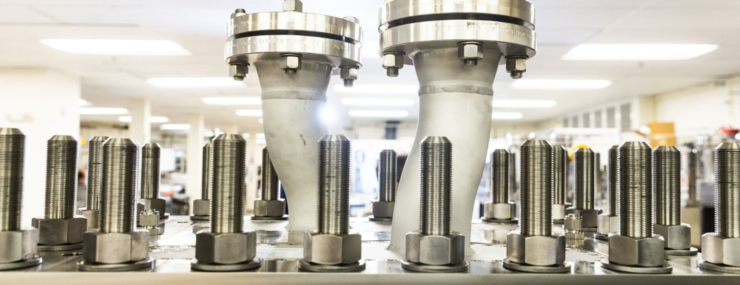Secretive Hydrogen Hub Talks Test Energy Agency Community Plans.
The Biden administration is negotiating with hydrogen industry leaders on legally binding commitments involving tens of thousands of new jobs and lower emissions, a pledge crucial to winning community support and achieving US environmental justice goals.
But the secrecy of those negotiations has emerged as an early sticking point in the Energy Department’s strategy to engage those communities hosting infrastructure spurred by its $8 billion hydrogen hub program, environmental justice advocates said and department officials acknowledged.
The department’s negotiations with seven regional hydrogen hubs have been playing out in private since the selections were announced in October. The department and hub leaders have declined to publish their applications, citing confidential business information and saying details are subject to change. They say they will share more publicly when the details of each regional hub are finalized in coming months.
🔥 What about we co-host a webinar? Let's educate, captivate, and convert the hydrogen economy!
Hydrogen Central is the global go-to online magazine for the hydrogen economy, we can help you host impactful webinars that become a global reference on your topic and are an evergreen source of leads. Click here to request more details
The hubs are among the most closely watched federal clean energy programs, generating intense interest across the country from oil and gas majors, utilities, transportation fleets, and manufacturers. The industry is still digesting Treasury Department guidance proposed Dec. 22, which included strict green requirements and effectively disqualifies nuclear power plants from powering hydrogen production—potentially upending plans in at least three of the hubs.
But for the communities that could host a range of infrastructure unknown to most of the country, information has been dribbling out. Communities and environmental justice advocates said they feel they’ve been sidelined since the hubs were established by the bipartisan infrastructure law in November 2021 and the department launched the program in September 2022.
Juan Jhong-Chung, climate justice director for the Michigan Environmental Justice Coalition, said:
The DOE is just paying lip service to environmental justice.
“Unfortunately, I think it’s going to be a long and hard fight.”
Public Perception Risk
Hydrogen is posing a major test for the DOE’s main vehicle for building local support and putting guardrails on industry: the community benefits plan.
Under the Biden administration, the department has required all applicants for competitive funding to file a plan that explains how they will help residents and conduct meaningful meetings with them. The plans emphasize workforce commitments and showing progress toward meeting the Biden administration’s Justice40 goals, which dictate that at least 40% of the benefits of federal spending go to disadvantaged communities.
But concerns over the hub’s lack of transparency and shifting scope has created a thorny issue for hydrogen proponents.
The DOE sees negative public perception as a real risk, said a department official who was granted permission to candidly discuss the program.
But the community benefits plan provides an opportunity to shape a potentially contentious industry by placing guardrails on what benefits a community must receive from the buildout, the official said.
US demand for hydrogen could reach 50 million metric tons by 2050, spurred in large part by the hubs, according to a DOE report published in June. The DOE estimates hydrogen has the potential to add 100,000 net new direct and indirect jobs by 2030.
The hubs alone will also reduce 25 million metric tons of carbon dioxide (CO2) emissions annually from energy-intensive end-uses such as heavy-duty trucking, shipping, cement, steel, and agriculture, the DOE said in October. That’s roughly equivalent to combined annual emissions of 5.5 million gasoline-powered cars.
The hydrogen hub model is complicated and ambitious. The department intends to demonstrate technologies and build infrastructure to produce, transport, and consume hydrogen—all within a region of the country. The seven hubs are geographically and politically diverse, and span from the Pacific Northwest, California, and the Upper Midwest to the Great Lakes, Gulf Coast, Appalachia, and the Mid-Atlantic.
It will be crucial to get an accurate measurement of benefits and harms—and make those public, said Lauren Piette, a senior associate attorney with Earthjustice.
Piette, said:
Is DOE going to be providing clear guidance on how you’re supposed to measure benefits?
“Having a uniform and credible approach to measuring harms and benefits and tracking them seems like it would be a prudent course of action.”
The DOE official said they agency acknowledges the community concerns and understands the frustration.
Feeling Blue
A major concern is how much the hubs will rely on fossil fuel production.
Roughly two-thirds of total project investment is associated with green hydrogen—projects that use renewable electricity and nuclear power to split the oxygen and hydrogen molecules without emissions.
The third type of production pulls hydrogen from natural gas and uses carbon capture to scrub emissions from production. Those facilities would then transport the carbon dioxide emissions through a pipeline to a permanent underground storage. Congress required DOE to select at least two hubs to be placed in gas-rich regions of the country.
By another measure, 80% of publicly announced hydrogen production capacity in hub-affiliated states will use natural gas with carbon capture and storage, BloombergNEF reported in November. If gas-sourced hydrogen will be the “dominant product” from the hubs, it is “unclear how ‘green’ these seven hubs will be,” the report stated.
The report added:
“Despite receiving public money, many are shrouded in mystery,”
“While it is understandable that projects will evolve as negotiations progress, more transparency would be welcome given the use of public funding.”
Sharing more details should be a top priority for the DOE, said Alan Krupnick, a senior fellow for Resources for the Future and director of its industry and fuels program.
Krupnick, said:
The very nature of the hydrogen hubs is rolling over EJ concerns, and I don’t know how that’s going to work out.
The problem could be alleviated “if we could see what the applicants are really planning here and whether they’ve tried to talk to the advocacy groups to deal with that.”
Fossil Fears
In the Midwest, a hub centered on Illinois, Indiana, and Michigan plans to use all three types of production.
Natural gas-sourced hydrogen would rely on carbon dioxide pipelines and permanent geologic storage facilities in places such as western Indiana, where companies have been interested in injecting CO2 into the ground.
Residents there worry about seismic activity, water quality, and the potential for CO2 contamination of aquifers and the air. A CO2 pipeline leak in Mississippi in 2020 sent 45 people to the hospital, drew a $2.9 million penalty, and prompted federal pipeline regulators to initiate a rulemaking.
Kerwin Olson, executive director of the Citizens Action Coalition, an Indianapolis-based environmental group, said:
They’re concerned, they’re frightened, they’re scared.
“The perspective in Indiana is that this hydrogen hub is going to require an enormous amount of CCS, which means an enormous network of pipelines and storage wells throughout the state of Indiana,” Olson said, referring to carbon capture and storage infrastructure.
Each project has already committed to carrying out community benefits and labor agreements, said Elizabeth Kocs, senior manager with GTI Energy who serves as the chief equity justice officer for the Midwest Alliance for Clean Hydrogen, known as MachH2. The hub will share goals and progress toward the goals on a public dashboard.
The hub leaders are identifying everyone who could be affected by project locations, which span three states, more than 30 counties, and more than 1,200 communities, Kocs said. But releasing the plans now could give some communities “false hope” that they will get certain benefits when nothing is set in stone, Kocs said.
Kocs, said:
Communities start to think there’s stuff happening behind the scenes, and that’s the last thing that we want them to imagine.
“Our goal is to be as transparent as possible.”
READ the latest news shaping the hydrogen market at Hydrogen Central
Secretive Hydrogen Hub Talks Test Energy Agency Community Plans. source








